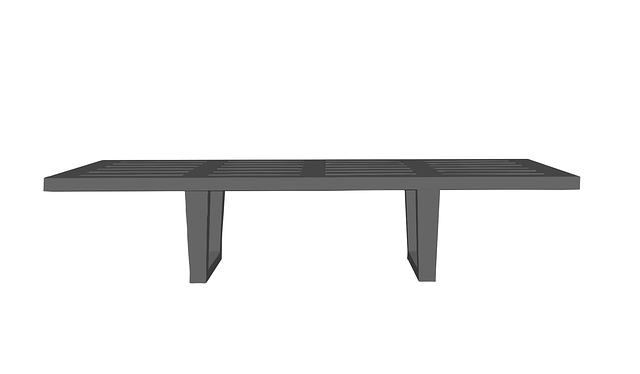Understanding Required Minimum Distributions (RMDs) is crucial for effective retirement income planning. At 72 or upon inheriting IRAs/Annuities, individuals must start annual distributions, avoiding IRS penalties. Strategic RMD planning involves withdrawing funds thoughtfully to maximize retirement income while adhering to regulations, minimizing tax liabilities, and ensuring stable cash flow. Diversifying your portfolio with asset classes like REITs, commodities, and private equity can enhance savings. Balancing these classes is key, as RMD planning impacts taxable income and overall retirement savings. Optimizing tax-efficient strategies and consulting a financial advisor ensures retirement savings work harder, securing a comfortable future.
Planning for retirement income is a complex process, but with strategic RMD (Required Minimum Distribution) planning, you can ensure financial security. This comprehensive guide explores critical aspects of retirement income strategies. We’ll delve into understanding RMDs and their impact on your funds, diversifying your portfolio, implementing tax-efficient investments, and creating a sustainable withdrawal plan that balances income generation and preservation. Maximize your retirement income potential with these expert insights tailored for optimal RMD planning.
- Understanding Required Minimum Distributions (RMDs) and Their Impact on Retirement Income
- Diversifying Your Retirement Portfolio: Assets and Investments to Consider
- Tax-Efficient Strategies for Maximizing Retirement Income
- Creating a Sustainable Withdrawal Plan: Balancing Income and Preservation
Understanding Required Minimum Distributions (RMDs) and Their Impact on Retirement Income

Understanding Required Minimum Distributions (RMDs) is a crucial aspect of retirement income planning. At age 72, or when you inherit an IRA or Annuity, you’re required to start taking distributions – known as RMDs – from these accounts each year. Failure to do so can result in penalties imposed by the IRS. RMD planning involves strategically withdrawing funds in a way that maximizes your retirement income while adhering to these regulations. By accounting for RMDs upfront, you can ensure a stable cash flow throughout your golden years.
These distributions have a significant impact on your overall financial strategy as they contribute to your tax burden and available savings. Smart RMD planning allows retirees to minimize tax liabilities by considering the tax implications of different withdrawal methods and timing. It’s about making informed decisions to stretch your retirement funds, ensuring financial security and peace of mind during this new phase of life.
Diversifying Your Retirement Portfolio: Assets and Investments to Consider

Diversifying your retirement portfolio is a strategic move that can help protect and grow your savings over time. In addition to traditional investments like stocks, bonds, and mutual funds, there are several other asset classes to consider. Real estate investment trusts (REITs), for instance, offer exposure to the real estate market without directly owning property. They’re particularly attractive as they often provide regular dividends, enhancing your retirement income stream.
Another crucial aspect is incorporating alternative investments like commodities and private equity. Commodities can hedge against inflation, offering stability to your portfolio. Private equity funds invest in non-public companies, potentially delivering higher returns but with increased risk. Balancing these diverse asset classes allows for a well-rounded investment strategy. Remember that RMD planning plays a significant role here—required minimum distributions (RMDs) must be considered when diversifying, as they impact your taxable income and overall retirement savings.
Tax-Efficient Strategies for Maximizing Retirement Income

In retirement, managing your income strategically is key to maintaining financial stability and security. One effective approach is to focus on tax-efficient strategies, ensuring every dollar counts. By carefully planning Required Minimum Distributions (RMDs), retirees can minimize their tax burden and maximize savings. This involves understanding the tax implications of different investment options and retirement accounts, such as IRAs and 401(k)s.
For instance, taking advantage of tax-deferred growth through Roth IRA conversions or backdoor Roth contributions can be a game-changer. These strategies allow for tax-free withdrawals in retirement, significantly boosting income potential. Additionally, working with a financial advisor to optimize RMD schedules and choose tax-efficient investments is crucial. This ensures your retirement savings work harder, providing a more comfortable and secure future.
Creating a Sustainable Withdrawal Plan: Balancing Income and Preservation

Retirement income strategies require a delicate balance between enjoying your hard-earned money and preserving it for the long term. One crucial aspect is crafting a sustainable withdrawal plan, especially when considering Required Minimum Distributions (RMDs). These distributions, mandated by law, can significantly impact your financial security in retirement. The key lies in strategic planning to ensure you withdraw funds in a way that supports your desired lifestyle while minimizing tax implications and potential penalties.
A well-thought-out RMD planning strategy involves determining the optimal withdrawal rate, considering factors like life expectancy, investment portfolio, and inflation. By balancing income and preservation, retirees can avoid depleting their savings too quickly and ensure financial stability throughout retirement. This approach allows for flexibility, enabling adjustments as circumstances change, ultimately leading to a more secure and enjoyable retirement journey.
Comprehensive retirement income planning involves a multifaceted approach, from understanding Required Minimum Distributions (RMDs) to diversifying investments and creating sustainable withdrawal strategies. By implementing tax-efficient strategies and balancing income preservation with growth, individuals can ensure a secure and fulfilling retirement journey. Effective RMD planning is key to unlocking the full potential of your retirement portfolio, allowing you to enjoy your golden years without financial stress.
